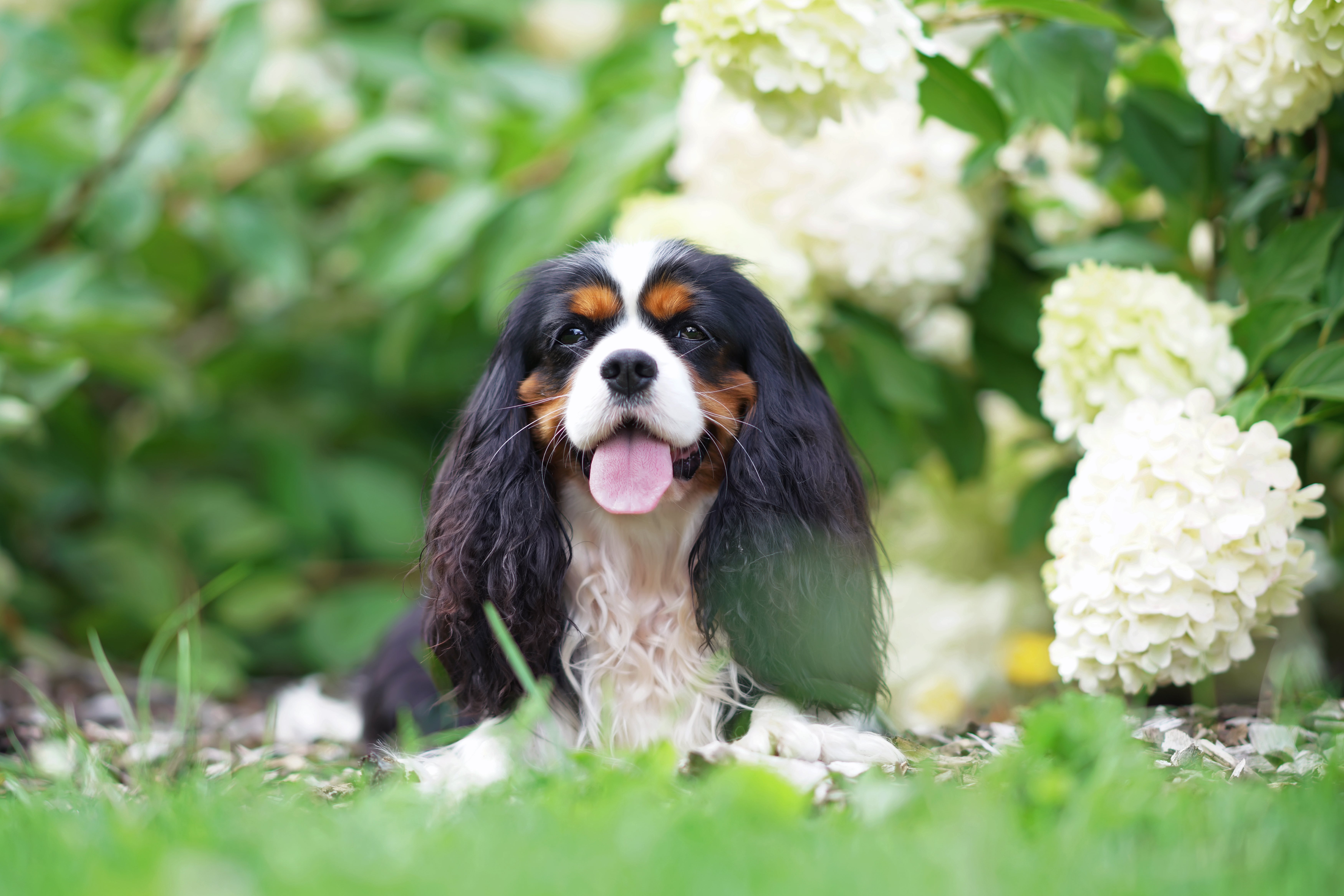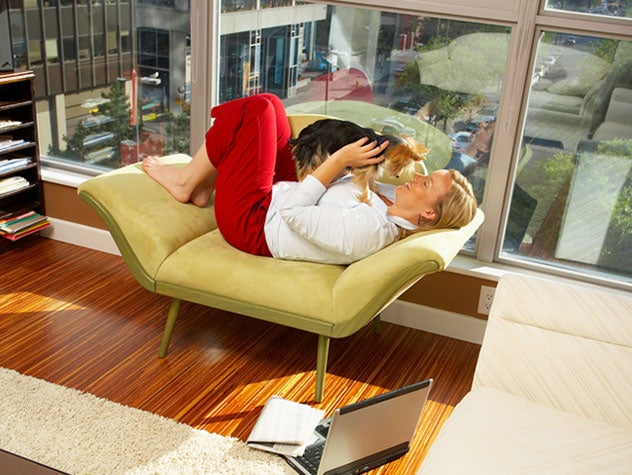Cavalier King Charles Spaniel
The Cavalier King Charles Spaniel is an elegant and royal-looking spaniel. They have jealousy-inducing long and silky coats and open and gentle expressions. They were known as comforter dogs during Tudor times, beloved by everyone, particularly royalty. They are named after King Charles II, who reigned during the 1700s. Sweet and mellow, they make good companion dogs today, even if you aren’t royalty.
Breed characteristics carousel
Learn More
Need to Know
- Dog suitable for non-experienced owners
- Basic training required
- Need to be aware of potential health issues
- Enjoys active walks
- Small dog
- Some drool
- Requires grooming
- Chatty and vocal dog
- Welcomes everyone happily
- Generally friendly with other dogs
- Gets along with other pets with training
- Great family dog
- Needs a small yard and can happily live in the city
- Can be left alone occasionally with training
- AKC Registered Breed

Personality
Highly valued as companion pets, the Cavalier is sweet, gentle, playful, and eager to please their owners. They are affectionate and quiet, happy to go wherever their owners go, whether to the couch or on a walk. They are affable and easygoing towards other pets, family members, and strangers. They do retain spaniel instincts, so they love to explore, sniff, and chase when playing outside.
European toy breeds like the Cavalier were bred by crossing breeds such as the Japanese Chin and Tibetan Spaniel. They were known as comforter spaniels in Tudor times, serving as lap dogs and foot warmers. They also served a vital purpose in attracting fleas away from their owners. Their easygoing disposition and adorable, open face endeared them to everyone, including royalty.
In the 1700s, King Charles II was so enamored with his toy spaniels that he was accused of ignoring matters of state to pay attention to his dogs. They were so closely associated with him and his reign that they became known as King Charles Spaniels. After the King passed, the Duke of Marlborough took over as the major champion of the breed. The red and white Blenheim color is named after his estate.
By the early 1900s, the few dogs that resembled the early members of the breed were considered to be inferior. A twist of fate occurred when a wealthy American, Roswell Eldridge, came to England and offered outlandish prize money for the best “pointed-nosed” Spaniels, most resembling the old type. Breeders bred their old-type dogs together in an effort to gain the prize, and in so doing, many came to appreciate the old type.
Ironically, these dogs, named Cavalier King Charles Spaniels in honor of the Cavalier King, eventually outstripped their short-nosed counterparts in popularity, becoming one of the most popular breeds in England. They were slower to catch on in America but now enjoy popularity.
You don’t have to be royalty to enjoy owning a King Charles Spaniel, just active and devoted to grooming your dog’s shampoo commercial-worthy coat. They are drawn to gentle, quiet people, although they get along well with almost everyone, including children. Ideally, they’d be taken to lots of places, as their separation anxiety can be intense.
While time needs to be devoted to grooming, less time can be devoted to exercising a Cavalier, split into two short walks, plus some training and games. Some will enjoy more exercise, but won’t do it in heat. They do retain some hunting instincts of spaniels, so they do well with walks that have a variety of interesting scents.
Pint-sized and gentle, King Charles Spaniels are ideal for just about any home setup. They’re undemanding and often curl up on the couch out of the way. They’ll enjoy a fenced-in yard to play and train but can adapt to smaller spaces or tighter quarters. They do well in quieter areas but can get by in an urban setting.
The King Charles Spaniel's supermodel silky coat is easy to groom at home by brushing through it once a day. The coat is unlikely to mat if left for a day or two, but it should be brushed regularly. The feathers, ears, eyes, and paw pads need to be checked daily because they can mat and tangle quickly, particularly if wet.
Friendly and eager by default, Cavaliers still need lots of ongoing socialization. They are small and easily overwhelmed, frightened, or hurt, so building up their confidence is key. You’ll want to ensure they have rock-solid recall and the ability to walk on a leash without pulling. They will love learning well beyond the basics, especially tricks and even mini agility courses. They respond well to positive reinforcement such as food and toys.
They can be delightful, affectionate, and loyal family dogs but can become anxious or nervous if handled roughly or inappropriately. King Charles Spaniels thrive in homes with older children as small children can be unpredictable and nerve-wracking. They love being included in family activities and hate being alone.
The cost of a Cavalier King Charles Spaniel from a breeder is significantly more than the cost of adopting one from a local shelter or rescue. The adoption fee usually covers additional items such as spaying or neutering, vaccines, and microchipping.

Learn more about feeding and caring for your Cavalier King Charles Spaniel on Purina.
Did You Know?
- Allegedly, a small toy spaniel of this type was found within the robes of Mary Queen of Scots, after she was beheaded.
- They are named for King Charles II, who allegedly ignored state duties to take care of his dogs. Says Samuel Pepys in 1667: "All I observed there was the silliness of the King, playing with his dog all the while and not minding the business."


